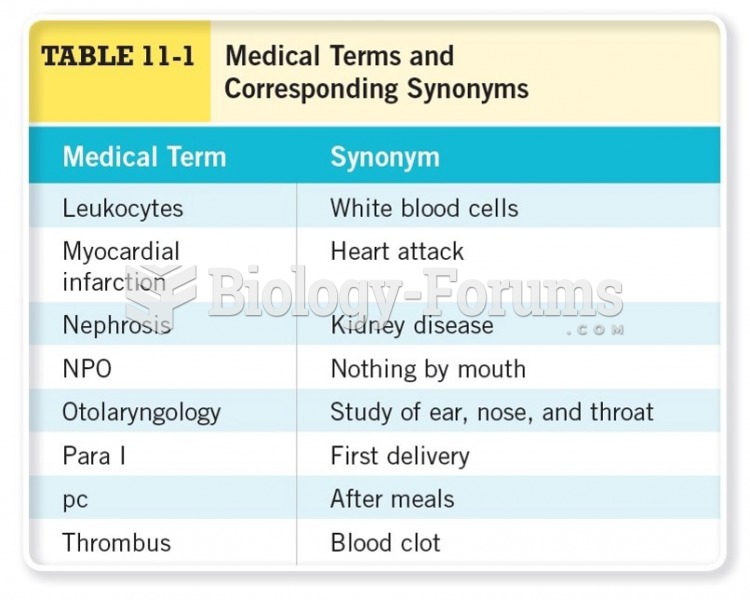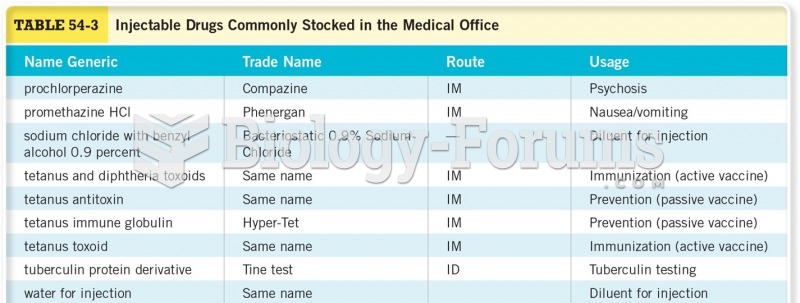Answer to Question 1
3
Rationale 1: Educational pamphlets can be effective but are not as effective as the nurse providing education to the patient.
Rationale 2: Medication education is considered to be a responsibility of the nurse, not the physician.
Rationale 3: Discussing medications each time they are administered is an effective way to increase the amount of education provided.
Rationale 4: Medication education is considered to be a responsibility of the nurse, not the pharmacist.
Global Rationale: Discussing medications each time they are administered is an effective way to increase the amount of education provided. Medication education is considered to be a responsibility of the nurse, not the physician or pharmacist. Educational pamphlets can be effective but are not as effective as the nurse providing education to the patient.
Answer to Question 2
2
Rationale 1: Planning is important but not the most significant role of the nurse according to state nurse practice acts and Joint Commission.
Rationale 2: State nurse practice acts and regulating bodies such as the Joint Commission consider teaching to be a primary role for nurses, giving it the weight of law and key important accreditation standards.
Rationale 3: State nurse practice acts and regulating bodies such as the Joint Commission consider teaching to be a primary role for nurses. Assessment is important but not the most significant role of the nurse according to state nurse practice acts and Joint Commission.
Rationale 4: Evaluation is important but not the most significant role of the nurse according to state nurse practice acts and Joint Commission.
Global Rationale: State nurse practice acts and regulating bodies such as the Joint Commission consider teaching to be a primary role for nurses, giving it the weight of law and key important accreditation standards. Assessment, planning, and evaluation are important but not the most significant roles of the nurse according to state nurse practice acts and Joint Commission.







